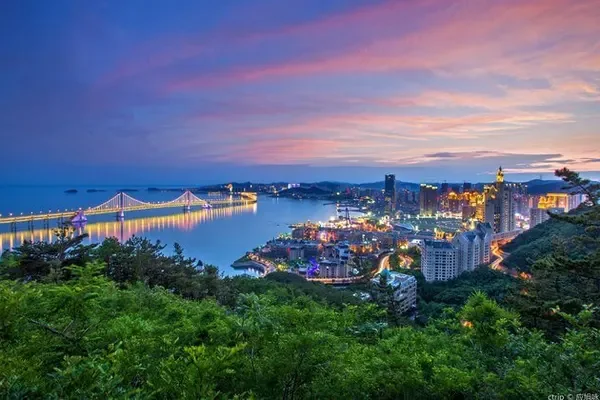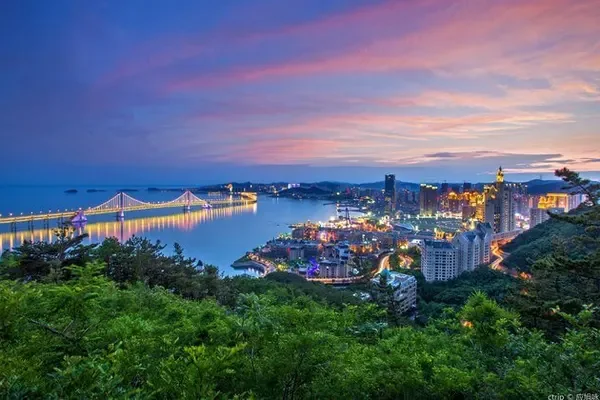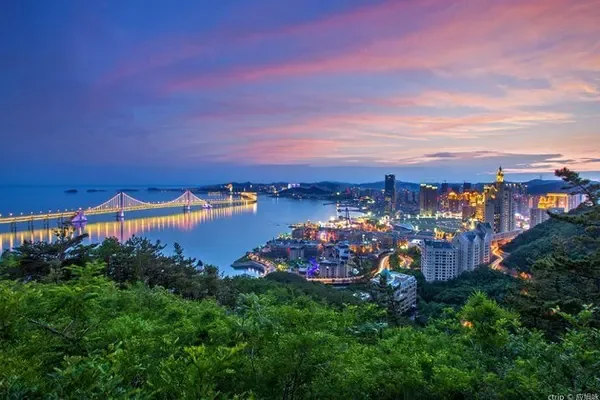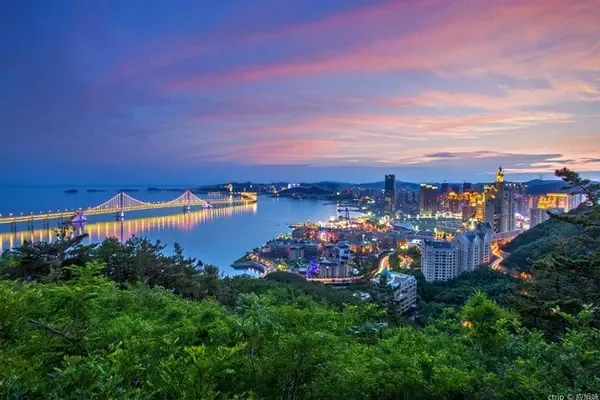The meaning of travel is a visual feast? An antipruritic for eyeballs? Show off in the circle of friends? Another touch for your taste buds?
no!
Traveling is another practice.
Travel teaches us to understand life better!
Traveling teaches us to do as the Romans do and be at peace with the situation;
Traveling teaches us that mountains are never too high, and waters are never too deep;
Travel teaches us to unite and love each other, and to face difficulties;
Travel teaches us to be grateful, tolerant, cherish, and encourage each other...
When we have traveled through thousands of mountains and rivers, through the feasting and feasting, tasted the food and didn't know the taste, and tried to stay overnight...
Finally, we return to the original starting point and start to live seriously. It turns out that we understand life better, love home and work more!
Our journey is not at the destination, but on the road...
Life is a journey, every experience is every sublimation!
——Driving westward for more than 4,000 kilometers, walking between the roofs of the world. I have tried traveling for 20 hours a day, with no grass growing, deserted, mountains blocked by heavy snow, lack of oxygen due to hunger, cold, lack of oxygen, unable to sleep at night, and rescheduled due to missed flights...
Impromptu perception!
【journey】
1D: Lanzhou→Xining (288KM)
2D: Xining → Qinghai Lake → Golmud (847KM)
3D: Golmud → Kunlun Mountains → Hoh Xil → Tuotuo River (426KM)
4D: Tuotuo River → Hoh Xil → Tanggula Pass → Amdo → Nagqu → Damxung → Lhasa (951KM)
5D: Potala Palace → Barkhor Street
6D: Lhasa→Mila Pass→Basongcuo→Nyingchi Bayi Town (474KM)
7D: Bayi Town → Gala Taohua Village → Sejila Pass → Lulang Town → Taohuagou
8D: Bomi→Ranwu Lake→Laigu Glacier→Guxiang (360KM)
9D: Guxiang → Lulang Forest → Yarlung Zangbo River → Suosong Village (274KM)
10D: Sosong Village
11D: Sosong Village → Milin Airport (90KM)
(The journey is more than 4,000 kilometers)






【Accommodation Introduction】
InterContinental Hotel (Five-star recommendation)




【Characters】






【Attractions】
1. Qinghai-Tibet Plateau
It is the largest plateau in China and the highest in the world. It is called the "roof of the world" and "the third pole". The Lakorun Mountains are connected to the west section of the Qinling Mountains and the Loess Plateau in the east and northeast, between 26°00′-39°47′ north latitude and 73°19′-104°47′ east longitude.





2. Qinghai-Tibet Highway
The route from Xining City to Golmud City crosses high mountains such as Rubber Mountain (3,800 meters above sea level), Wanggaxiu Mountain (3,680 meters above sea level), Tutu Mountain (3,500 meters above sea level), and crosses Dashui River, Xiangrid River, Gaikeguang River, The Brazilian River, Qingshui River, Hongshui River and other rivers have a total length of 782 kilometers, of which 564 kilometers belong to the plain and slightly hilly area, and 218 kilometers belong to the heavy hill area. The altitude of the whole section is 2200-3800 meters. The section from Golmud City to Lhasa City crosses the Kunlun Mountains (4,600 meters above sea level), Fenghuoshan Mountain (5,010 meters above sea level), Tanggula Mountain (5,320 meters above sea level), Touerjiu Mountain (5,180 meters above sea level), crosses the Chumar River, The Liang River, Qushui River, Xiushui River, Beilu River, Yamal River, Tongtian River and other rivers have a total length of 1,161 kilometers, of which 1,013 kilometers belong to the Pingqiu District and 148 kilometers belong to the Chongqiu District. The altitude of the whole section is above 4000 meters.





3. Lanzhou
Lanzhou, referred to as "Lan", is the capital of Gansu Province, an important industrial base and comprehensive transportation hub in Northwest China, one of the important central cities in the western region, an important fulcrum of the Lanzhou New Economic Belt in West Longhai, and an important transportation in the Northwest The hub and logistics center is one of the five central cities of the Chinese section of the New Eurasian Continental Bridge, the second largest city in Northwest China, the bridge and link connecting East China and Central China to the West, and a transportation and communication hub and scientific research and education center in Northwest China. An important node city of the Silk Road Economic Belt, it is also the station of the Army Department of the Western Theater of the Chinese People's Liberation Army.




.
4. Qinghai Lake
Qinghai Lake is called "Cuowenbu" (meaning "blue sea") in Tibetan. Located in the northeast of the Qinghai-Tibet Plateau, within the territory of Qinghai Province, it is the largest inland lake and saltwater lake in China. It was formed by the collapse of faults between Datong Mountain, Riyue Mountain and Qinghai Nanshan in the Qilian Mountains.







5. Kunlun Mountains
The Kunlun Mountains (Kunlun Mountains), also known as Kunlun Xu, China's First Divine Mountain, the Mountain of Myriad Ancestors, Kunlun Hill or Yushan. It is the large mountain system in central Asia and the backbone of the mountain system in western China. The mountain range starts from the east of the Pamirs in the west, runs across Xinjiang and Tibet, and extends to Qinghai. square kilometers. Kunlun Mountain has a prominent position in the cultural history of the Chinese nation as "the ancestor of ten thousand mountains". The ancients called Kunlun Mountain the "ancestor of dragon veins" in China.




6. Hoh Xil
Qinghai Hoh Xil National Nature Reserve mainly protects rare wild animals, plants and their habitats such as Tibetan antelope, wild yak, Tibetan wild donkey, and Tibetan gazelle. In November 2014, Hoh Xil in Qinghai started to apply for the World Natural Heritage. At 13:00 on July 7, 2017, at the 41st World Heritage Conference held in Krakow, Poland, Qinghai Hoh Xil was approved to be included in the "World Heritage List" with the unanimous consent of the World Heritage Committee, becoming China's 51st World Heritage Site .




7. Potala Palace
The Potala Palace was originally built for Zamp Songtsen Gampo of the Tubo Dynasty to marry Princess Chizun and Princess Wencheng. In 1645 (the second year of Shunzhi in the Qing Dynasty), during the period of the Heshuote Khanate of the Qing Dynasty, the Dharma Protector King Gushi Khan and the Gelug Sect Regent Sonam Qunpei rebuilt the Potala Palace. The place where political and political ceremonies are held is also the place where the spiritual pagodas of Dalai Lamas are enshrined. In the old days, it was the ruling center together with the Yamen of the Minister in Tibet.








8. Lynch
Nyingchi has beautiful scenery, and many areas are known as "Tibet Jiangnan". There is Nyingchi Peach Blossom Festival, and there are colorful Nanyigou and Basongcuo. There are also the bottom of Medog County and Zayu County, which are known as Xishuangbanna in Tibet.








9. Gala Peach Blossom Village
Gala Peach Blossom Village is 17 kilometers away from Bayi Town, Nyingchi County, where the opening ceremony of Nyingchi Peach Blossom Festival is held every year. The small village is surrounded by mountains and rivers. There are many hundred-year-old peach trees in the village. When the peach blossoms are in full bloom, the whole village is covered, and the scenery is very beautiful.


10. Lu Lang Lin Hai
Lulang Tibetan means "Dragon King Valley". It is located in Lulang Town, Nyingchi County, Nyingchi Prefecture, Tibet, known as "Snowland Switzerland", on the South Sichuan-Tibet Highway (National Highway 318), about 80 kilometers away from Bayi Town Falling in the deep mountains and old forests, it is located in the water and air zone of the Indian Ocean poured into the Yarlung Zangbo River Grand Canyon, with an altitude of 2700-4200 meters and a warm and semi-humid climate on the plateau, known as "Tibet Jiangnan".
Lulang Forest is a forest in the sea of clouds and mist. It has the reputation of "making people not want to go home". The whole scenic spot is picturesque, surrounded by snow-capped mountains, forests in the ditch, and the forests are as neat as man-trimmed. In the meadow, many dwelling houses are built in this heavenly forest surrounded by mountains and rivers, with winding streams around and thousands of wild flowers blooming, it is simply a paradise on earth.





11. Bomi
It is not an exaggeration to say that Bomi is the hometown of glaciers in China. The reason why it is called "the hometown of glaciers" is that there are hundreds of glaciers in Bomi. For example, there is the largest oceanic glacier in China—— — Kaqin Glacier, Midui Glacier, one of the six most beautiful glaciers in China, and Laigu Glacier, one of the three largest glaciers in the world.
And overlooking Bomi from the plane, the snow-capped mountains and glaciers are endless. Statistics show that there are 2,040 glaciers in Bomi, with a total area of 4,382.5 square kilometers, accounting for 26.1% of the county's total area.










Laigu Glacier, one of the three largest glaciers in the world.








12. Bomi Taohuagou
Taohuagou is 43 kilometers long. There are three villages in the ditch: Runa Village, Dongyou Village and Qingduo Village. This is the place where Bomi peach blossoms bloom the most. There are peach blossom trees everywhere in the ditch, and the colorful peach blossoms, white snow-capped mountains, and green barley seedlings weave into a beautiful land.









13. Ranwu Lake
Ranwu Lake: It is called Ranwucuo in Tibetan (cuo is the pronunciation of Tibetan lake). It is located in the southwest corner of Basu County, Qamdo Prefecture, about 90 kilometers away from Baima Town, the county seat of Ranwu Township. The cause is a barrier lake formed due to landslides or mudslides blocking the river. There are many barrier lakes formed in the southeast of Tibet where geological movements are active. Ranwu Lake is well known to many travelers who travel along the Sichuan-Tibet Highway because it is close to the Sichuan-Tibet Highway.









14. Palong Zangbo River
To the southwest of Ranwu Lake is the Gangrigabu Snow Mountain, to the south is the Azagonla Glacier, and to the northeast is the Boshula Ridge. The melted ice and snow from the surrounding snow mountains constitute the main supply water source of Ranwu Lake. It is the main source of the famous Palong Zangbo River.











15. Brahmaputra Grand Canyon
The Brahmaputra Grand Canyon is the deepest canyon on earth. According to the data released by the State Bureau of Surveying and Mapping: The Grand Canyon starts from Daduka Village, Pai Town, Milin County in the north (2,880 meters above sea level), passes through the Yarlung Zangbo River in Pailong Township, and ends in Baxika Village, Medog County in the south (115 meters above sea level, In southern Tibet (near Assam, India), the main body is in Medog County. With a total length of 504.6 kilometers, the deepest point is 6009 meters, and the average depth is 2268 meters, it is undoubtedly the largest canyon in the world. It is far larger than the Palong Zangbo Grand Canyon, the second largest in the world, the Grand Canyon of Colorado in the United States (2133 meters deep, 370 kilometers long) and the Colca Grand Canyon in Peru (3203 meters deep, 90 kilometers long).















16. Nanga Bawa Snow Mountain
Nanjia Bawa Snow Mountain is 7,782 meters above sea level. It is difficult to see the real face because of the cloud and fog all the year round, so it is called "Shameful Girl Peak" by the Tibetan people. National Geographic magazine rated this mountain as the most beautiful snow peak. Suosong Village is located in the innermost part of the Brahmaputra Grand Canyon Scenic Area, and it is the best place to photograph Namjagbarwa Snow Mountain. The altitude here is 3170 meters.






17. Rizhao Jinshan







18. Galaxy beauty












There is a kind of longing called "soul lingering in dreams"; there is a kind of touch called "soul out of body"; there is a kind of feeling called "mixed feelings"...! Parting is just a short-term ending; reunion is destined to be passionate!



